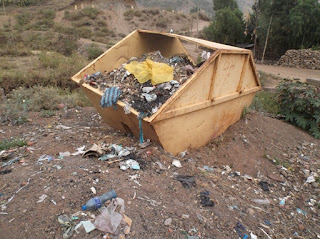As urban centers like Sydney
continue to grow, managing waste effectively becomes a critical aspect of
environmental stewardship. Waste classification is a systematic process used to
categorize and manage different types of waste based on their characteristics,
composition, and potential environmental impact. In Sydney, Australia, this
process is essential for ensuring proper disposal, recycling, and containment
of waste materials.
Waste classification is a fundamental step in waste
management, serving several purposes:
- Identification and Categorization: Waste Classification Sydney involves the
identification and categorization of waste materials based on their
properties, source, and potential hazards. This categorization helps
authorities and waste management facilities determine the most appropriate
methods for handling and disposing of specific types of waste.
- Compliance with Regulations: In Sydney, waste
classification is closely tied to regulatory frameworks established by
bodies such as the New South Wales Environment Protection Authority (NSW
EPA). Compliance with these regulations ensures that waste is managed in
an environmentally responsible and legally compliant manner.
- Risk Assessment: Classifying waste allows for the assessment of
potential risks associated with different types of waste. This information
is crucial for developing strategies to mitigate environmental and health
risks.
- Optimizing Resource Recovery: Proper Waste Classification Sydney facilitates the identification of materials that
can be recycled or reused. This supports resource recovery initiatives and
reduces the environmental impact of waste disposal.
A report of waste classification is a detailed
document that provides a comprehensive overview of the waste generated at a
specific site. The preparation of Waste
Classification Report Sydney is often a regulatory requirement for certain types of
waste-generating activities. Here's how these reports contribute to responsible
waste management:
- Detailed Waste Analysis: Waste Classification
Reports include a thorough analysis of the composition and characteristics
of the waste generated at a site. This involves sampling and laboratory testing
to determine the types and concentrations of contaminants.
- Conformance with Regulatory Standards: Waste Classification
Reports must adhere to the regulatory standards set by agencies such as
the NSW EPA. This ensures that the waste characterization process meets
the required quality and safety standards.
- Risk Assessment and Management Strategies: The report includes a
risk assessment based on the identified waste types. It outlines
management strategies to minimize or eliminate potential risks associated
with the disposal or treatment of waste materials.

Waste Classification Report Sydney - Guidance for Proper Disposal: Waste Classification
Reports provide guidance on the appropriate methods for the disposal,
recycling, or treatment of waste. This ensures that waste is managed in a
manner that aligns with environmental regulations and sustainability
goals.
- Documentation for Regulatory Compliance: Completing a Waste
Classification Report is often a regulatory requirement for obtaining
permits or approvals for certain waste-generating activities. The report
serves as documentation of compliance with environmental regulations.
In Sydney, waste classification is an integral part of
the broader strategy to manage waste responsibly and sustainably. Through the
systematic categorization of waste types and the preparation of detailed Waste Classification Report Sydney, the city can address environmental concerns,
minimize risks, and optimize resource recovery. As Sydney continues to evolve,
the commitment to effective waste classification and management practices
stands as a testament to the city's dedication to environmental conservation
and the well-being of its communities.





